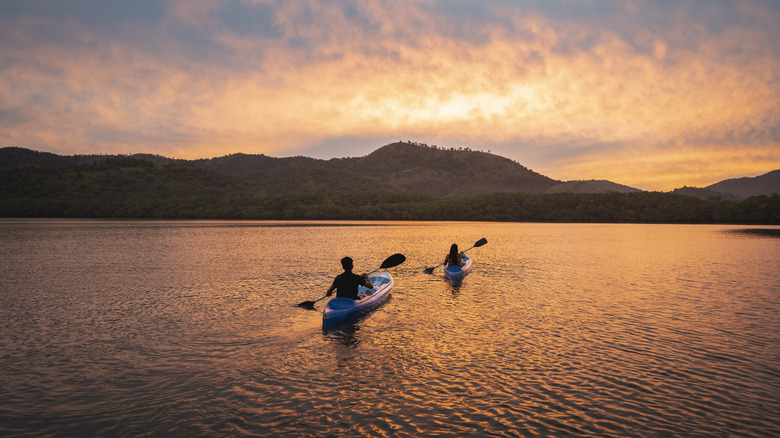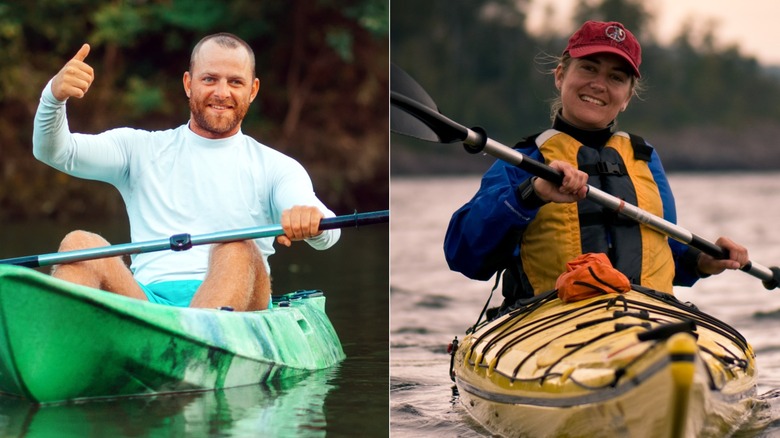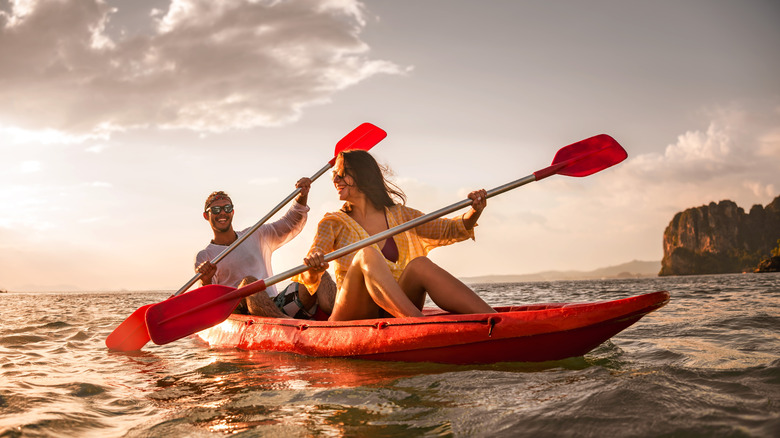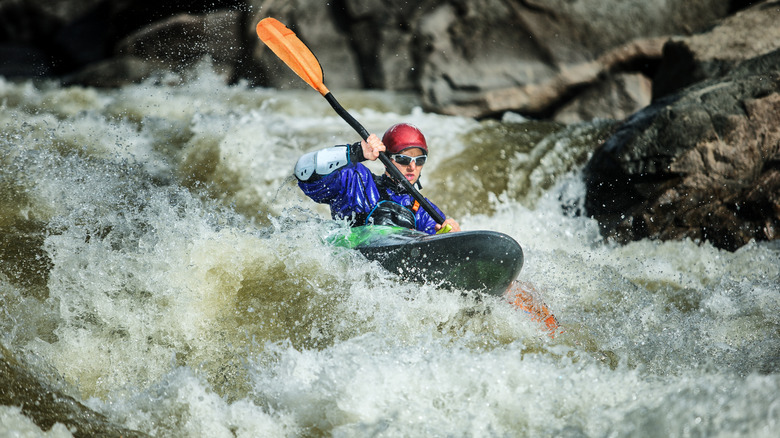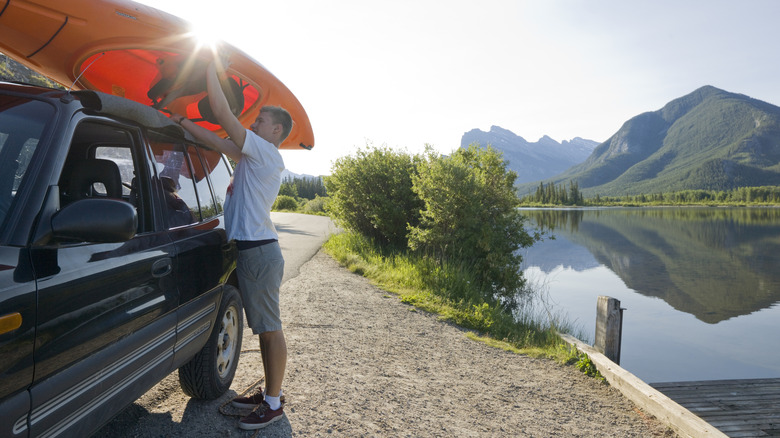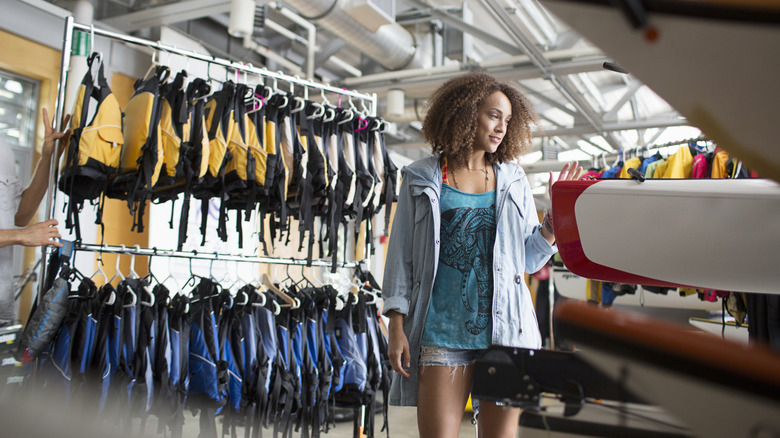How To Choose The Best Kayak For Yourself
We may receive a commission on purchases made from links.
Paddlesports are among the fastest growing outdoor activities in the United States. Within that realm, kayaking is the most popular. This increase in popularity has led to more efforts to educate paddlers on kayaking safety tips and how to avoid the major mistakes people make while kayaking. It is equally important for potential paddlers to understand how to choose the best kayak for themselves, as having the correct one can make a huge difference in both the enjoyment and safety of a kayak excursion. However, given the dizzying array of kayaks on the market, this can be a daunting task.
When looking to buy a new kayak, there are several factors that need to be considered. Kayaks are typically designed for specific activities and/or types of water, so these are among the top factors to ponder. But, it is also important to give some thought to how you will be transporting and storing the kayak, as well as, obviously, the cost. There are countless ways to customize and stylize kayaks beyond the basics, but unless you have the proper type of hull to begin with, no amount of modifications will make it the best kayak for your needs. So, it is critical you keep these factors in mind when shopping for a new boat so you choose the best kayak for yourself.
Picking between a sit-on-top or sit-in kayak
At the very basic level, all kayaks can be categorized as one of two types: sit-on-top or sit-in. Each of these types have advantages and disadvantages. While you may have a natural inclination towards one or the other of the two types, it is important to make sure they are actually suitable for the type of paddling you intend to do. Additionally, within each of these types, there are numerous variations. So, picking a sit-on-top or sit-in kayak is just the first of several decisions you need to make to ensure you choose the best kayak for yourself.
Sit-in kayaks are what most people envision when they think of kayaks. These boats have a cockpit which you sit in, as the name suggests. They come in various models, which are designed for different purposes. However, in general, they track straighter and move faster than sit-on-top boats. Additionally, they are meant to keep the paddler dry, especially if they are fitted with a spray skirt. However, they can capsize or sink if they do fill with water and they can be more difficult to get in and out of than sit-on-top models.
Sit-on-top models tend to be wider, more stable, and easier to get in and out of. Given that one of the little known dangers of kayaking is flipping over, SOTs are often the choice for beginners and those who are claustrophobic or worried about getting into the cockpit of a sit-in. Additionally, because sit-on-tops are self-bailing, they will not fill with water. However, you will get wet. As such, they are typically utilized in warmer weather. They can be used in cold weather, but you will need to wear waders or a wetsuit. Also, they tend to be a bit slower, so aren't as good for long-distance paddlers and are best suited for calmer waters, with the exception of the surf or beachfront paddling.
The type of kayaking activity you'll be doing
Kayaks are used for all sorts of activities: casual paddling, touring, shooting rapids, fishing, birding, surfing, racing, sightseeing — the list is endless. While the fact that kayaks can be used for such an array of activities is an enticing reason to take up paddling, it is also important to note that many of these activities require different types of crafts. While it is possible to find a kayak that is a good compromise for many activities, no one boat is ideal for everything.
Most often, kayaks are broken into three broad categories — recreational, day touring, and touring. Recreational kayaks are typically shorter and wider. This makes them more stable, which is ideal for pursuits such as fishing, birding, or casual paddling on relatively calm waters. However, it also makes them slower and more erratic, so they aren't as ideal for longer paddles.
Touring kayaks are the longest and narrowest kayak models. These boats are fast and sleek, but less stable. They are ideal for long, multi-day paddles, but require a more skilled operator. Day touring kayaks fall between recreational and touring kayaks in both length and width. They are a compromise that often makes them very versatile. However, it is also important to keep in mind that there are no standards to these labels. So, what one manufacturer labels as one type, may be different from another.
The type of water you'll be kayaking in
Paddling is not the same everywhere. Each body of water requires a different set of skills as well as the proper craft. While knowing how to kayak in different types of water is important, so is choosing the proper kayak for each type of water. No one kayak is perfect for everything. River, whitewater, ponds and lakes, open ocean, and surf paddling, for instance, tend to require different kayak configurations.
In general, sit-on-tops and smaller recreational sit-ins are suitable for calm lakes and ponds and slow to moderate moving rivers. SOTs are also good for surf zone paddling. Faster-moving rivers and rapids tend to require more specialized sit-ins, while day touring models are ideal longer paddles across larger lakes and moderate rivers. Open ocean and long-distance paddles require touring models.
Again, these are broad generalizations of kayak capabilities. You will need to consider the length, width, and style of individual kayaks to determine if they meet the needs of what you do most often. Avid kayakers who paddle on multiple types of water may need multiple kayaks to be properly prepared for each excursion. However, most recreational kayakers can get by with choosing the right kayak for the type of water they most often use or perhaps finding a nice compromise that can handle a few different scenarios.
Portability and storage
Something else to consider when choosing the best kayak for yourself is how you are going to transport it, as well as where you will store it. While some shorter models may fit in the bed of a pickup, most rigid kayaks need to be secured to kayak roof racks. So, the type of transportation you will be using to get to your paddling destination must be taken into account, as should where the kayak will be kept when not in use.
If you aren't interested in adding a kayak rack to your vehicle and/or don't have much storage space in your yard or garage, you might want to consider either an inflatable or foldable kayak. Foldable kayaks usually are light and fold into a small bag or pack that can be easily stored and even used for backpacking trips. However, these boats generally aren't as rugged and durable.
Inflatable kayaks, such as the Intex Excursion Pro K1, have become increasingly popular. While they do tend to be a little heavier than foldables, they still pack small for both storage and transport. There are a wide range of models and styles, ranging from those that are not much more than enhanced pool toys meant for casual paddling in a calm pond to rugged adventure boats for white water rapids to serious open-ocean touring models.
Cost and other considerations
Even after considering all those factors and variables, there are a few other things that you should take into account when choosing the ideal kayak for yourself. Chief among those is cost. Kayak ranges widely in price. The idea is to find a model that does what you need — or is very close to meeting all your needs — and also falls within the budget you have set aside for a new boat.
Some additional considerations that can affect performance, a well as cost, include the type of material the boat is constructed from. Polyethylene plastic is the least expensive, but also the heaviest and least durable. ABS plastic is a step up in price and performance. From that point, there are numerous composite materials that add to the cost and performance while cutting the weight of the craft.
Other things to keep in mind are options such as a rudder, skeg, or tracking fin for tracking and control, pedals for hands-free operation, and storage capacity. Depending on your intended activities, you may also want to look at options such as rod holders, additional storage hatches, drink holders, scuba tank wells, and more. Additionally, if you tend to always paddle with a partner, you may want to consider a tandem model instead of two solo kayaks.
